Juniper Cossack "Tamaristsifolia": description, planting and care

Landscaping is a modern and promising trend in the area of landscaping. In recent years, green compositions can be seen not only near social and educational institutions, in city parks and alleys, but also near private and apartment buildings, whose residents are trying to decorate and refine their territory. Among the huge number of perennial and annual plants, conifers are often chosen, these beautiful and unpretentious plants.
In recent years, along with traditional pine and spruce trees, different types of junipers can be seen in flower beds and in recreation areas. To ensure that the created green composition does not require special care, florists recommend paying attention to an undemanding ephedra - Cossack juniper "Tamaristsifolia".

Description
Juniper Cossack "Tamariscifolia" (Tamariscifolia) - the most popular variety, it easily tolerates any weather conditions and low temperatures... The homeland of this species is the territory of Asia, eastern Siberia and Europe. "Tamaris" refers to slow-growing conifers, the annual growth of which does not exceed 30 mm in height and 100 mm in width. The height of a 10-year-old bush is only 30 cm, and the crown diameter can be up to two meters.
The branches of the ephedra are dotted with small needles with pointed ends, the color of which can be either light green or blue-green. The fruits of the plant are round and no more than 10 mm in diameter. The color of the buds changes from green to dark blue with age.
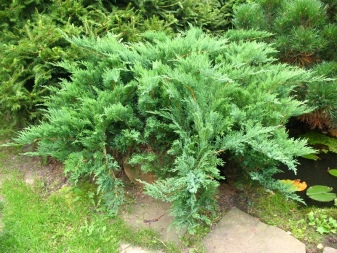
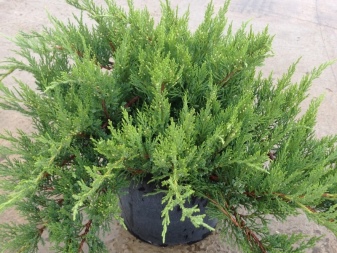
Juniper Cossack "Tamaristsifolia" belongs to the most unpretentious varieties, with a high level of frost resistance. The plant feels comfortable both on rocky soil and on sandy soil. The ephedra can be without water for a long period, but in wetlands it will certainly die.
Before purchasing seedlings, novice gardeners should know that the fruits of the plant contain toxic substances, so it is better for families with small children and pets to choose a different variety.

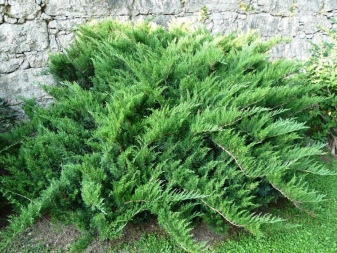
The shoots of this variety have a pleasant coniferous aroma and contain a large amount of useful essential oilsthat have a positive effect on human health.
Due to its unpretentiousness, the juniper feels comfortable both in ecologically clean areas and in polluted industrial areas and near highways. Tamaris can be planted both on flat areas and on slopes.
Like any plant, Tamaris has a number of advantages and disadvantages.
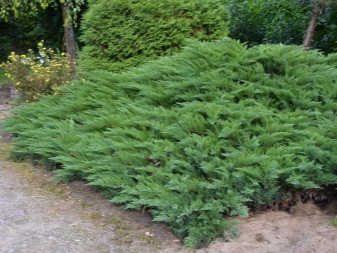
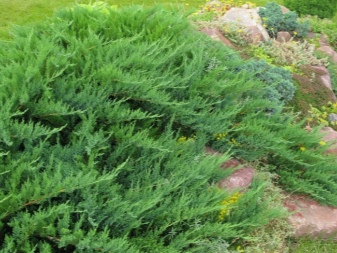
Advantages:
- unpretentiousness;
- ease of care;
- resistance to low temperatures and strong gusts of wind;
- the presence of bactericidal phytoncides.
Of the shortcomings, it can be noted the presence of poisonous juice.
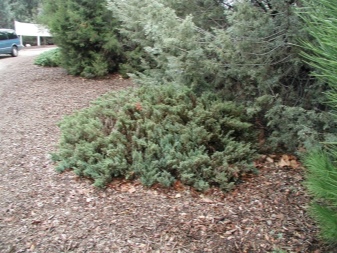
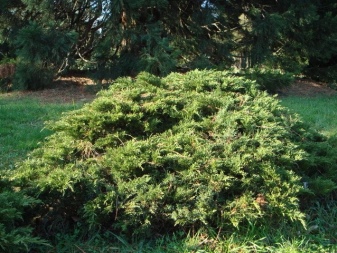
How to plant?
This type of juniper feels comfortable in well-lit and sunny areas. Plants planted in the shade will have a dull color and a sparse crown. Experts recommend choosing elevated areas, the surface of which is as far away from groundwater as possible.
The volume of the planting pit depends on the size of the root system and should be at least 2 times larger than it. Rooting of seedlings with an open root system is best done in early autumn, and with a closed one - in spring.In order for the juniper to quickly begin, planting material must have a strong root system without mechanical damage and signs of disease.
If the roots are a little dry, then before planting, it is better to soak them for 3 hours in warm water with the addition of an accelerator of the growth of the root system.
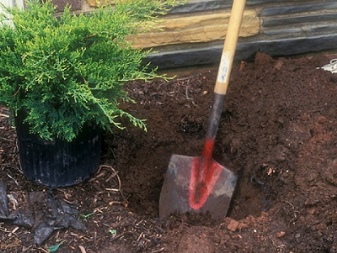
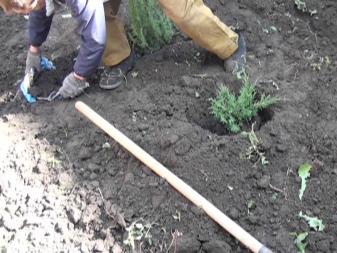
To prevent root decay, a thick layer of drainage materials must be laid on the bottom of the dug hole, which can be broken brick, pebbles or expanded clay. A mixture of sod land, peat and river sand should be used as a nutrient soil. In the center of the pit, it is necessary to form an earthen tubercle, and put a seedling on it. All voids must be carefully filled with soil while compacting it. All planted bushes should be watered abundantly with clean water at room temperature.
Planting junipers near curbs provides for a distance of at least 50 cm between seedlings, but between single bushes, the optimal distance is 2 meters.
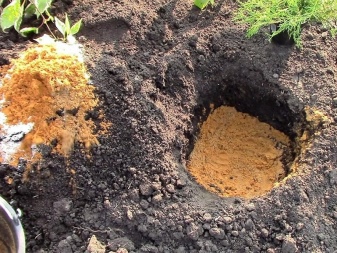
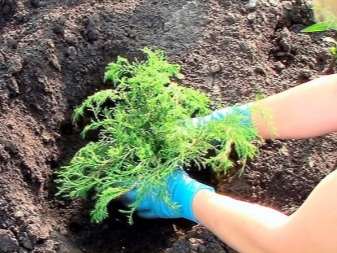
How to care?
This type of juniper is picky and unassuming to care for, but in order for it to please the owners with its appearance, it is necessary to follow the rules for caring for it. The list of mandatory manipulations includes moistening the soil, fertilizing, loosening, mulching and processing from pathogenic microorganisms and parasites.
Young seedlings in the summer and dry season need weekly watering, but the soil near adult junipers it is enough to moisturize once a month. Spraying the bushes weekly will also have a positive effect, which is best done in the evening when the air temperature drops. To provide the plant with all the necessary mineral elements, it is enough in the spring to enrich the soil with special complex preparations, which will have a beneficial effect on the growth of the bush and its appearance.
To ensure maximum oxygen access to the root system it is advisable to loosen the root zone after watering with the simultaneous removal of weeds.
If mulch was laid out near the plant when planting, then weeding can be omitted.
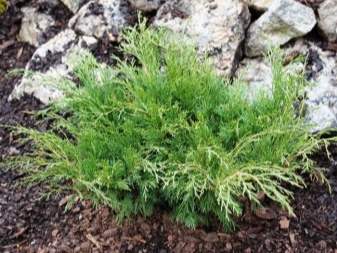
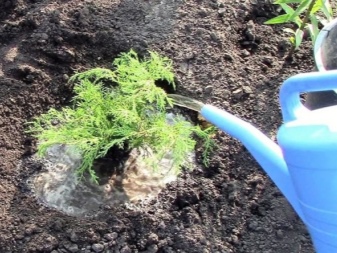
Due to the fact that the plant has a low annual growth, experienced gardeners do not recommend corrective pruning, but confine themselves to sanitary pruning, during which in the spring it is necessary to carefully cut off all damaged and dry branches. To give an adult bush the desired shape, it is allowed to pinch off the protruding and untidy ends of the branches once a year. All cut points must be immediately treated with a special resin. When performing these types of work, it is imperative to use personal protective equipment that will prevent poisonous juice from getting on the skin and mucous membranes.
Despite the fact that the juniper "Tamariscifolia" belongs to frost-resistant varieties, at the beginning of winter, experts recommend carrying out a number of preparatory work before the onset of frost. To prevent the root system from freezing, it is advisable to cover the soil near the plant with mulching materials. All diseased and damaged shoots must be removed, and the sections must be disinfected. It is better to cover young bushes with spruce branches or non-woven material.
In the spring, the covering material must be removed gradually, trying to minimize the risk of sunburn.
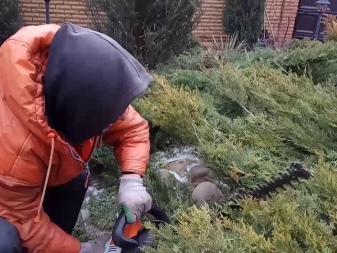
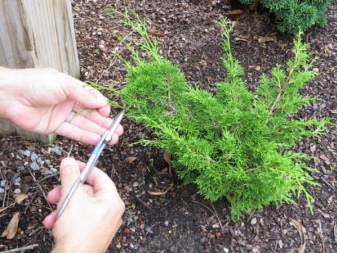
Reproduction methods
In order to get young seedlings of Cossack juniper, you can use the following breeding methods:
- cuttings;
- seeds;
- with the help of bends.
For reproduction of juniper at home, it is better to use rooted cuttings. Cutting is the simplest and fastest method for obtaining young shoots. In this case, the planting material is small cut off shoots, which have a small part of the trunk from the mother bush.It is only necessary to separate branches with a sharp and disinfected instrument.
All collected shoots are required be sure to treat with stimulants of the growth of the root system, only after that you can land in special containers. As a nutrient mixture, you can use both purchased soil for conifers, and independently prepared, which should include sod soil, peat and sand.
The bottom of the containers must be covered with drainage material.


After the shoots have taken root, containers it is necessary to shed clean and settled water, and create greenhouse conditions around the cuttings. Only after the first shoots appear can the plastic wrap be removed. To obtain healthy and beautiful seedlings, planting containers should be placed in bright and well-ventilated areas.
Planting in open ground in a permanent place can be carried out only after 3 years, when the root system gets stronger and gains strength.
Seed and cut propagation is a complex and time-consuming process that nursery workers and breeders use. These breeding methods require special practical and theoretical knowledge, and therefore are not suitable for ordinary gardeners.
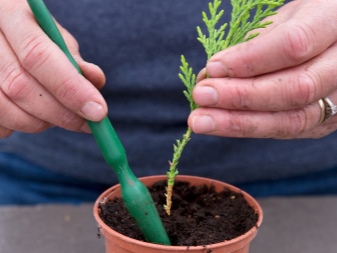

Diseases and pests
Despite the unpretentiousness and high genetic resistance to various diseases, Tamaris often suffers from fungal infections, which can not only spoil its appearance, but also lead to the death of the plant. Symptoms are orange growths. At the first signs of illness, the following measures must be taken immediately:
- removal of the diseased appendix with its subsequent burning;
- treatment of the bush with a fungicide;
- reuse of medicinal formulations.
The plant can also be affected by viral infections and be damaged by sunburn. If a shrub is planted in swampy areas, then tracheomycotic wilting will certainly appear, the first symptoms of which are darkening of the root system and the appearance of white spores throughout the plant.
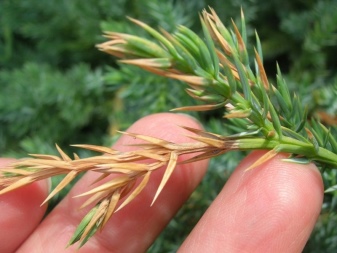
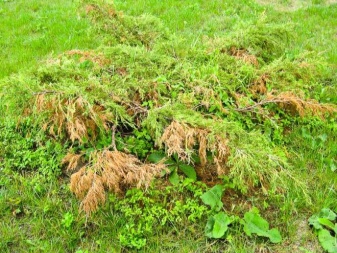
If the bushes are very close to each other, and the passage of air between them is difficult, the ephedra begins to wilt. The first signs of this disease are shedding and drying of needles, which subsequently becomes massive.
In order to reduce the likelihood of dangerous fungi getting on the juniper, experts do not recommend planting it near fruit trees and roses, which suffer from the same diseases.
Juniper Cossack "Tamaristsifolia" belongs to the species that are practically not affected by pests, but experts still recommend regular inspection of plants.
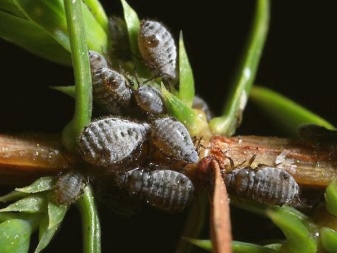
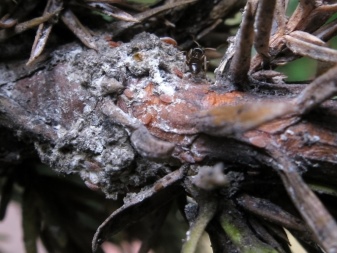
Use in landscape design
Cossack juniper is one of the most favorite plants of landscape designers. Due to the fact that the plant does not grow in height, but in width, decorators use it to decorate parks, gardens and flower beds. The plant not only decorates the territory, but also divides it into functional zones. The ephedra looks spectacular and beautiful as a hedge and near curbs.
Some designers use "Tamaris" to decorate their projects, which is planted in decorative containers. Flower pots can be placed not only on summer grounds, balconies and terraces, but also inside the house. The juniper on the windowsill will not only help to green the room, but will also be able to protect its owners from respiratory and viral infections.
In order to decorate the area near the house, it is not necessary to spend a large amount of financial resources on the purchase of expensive imported plants, which will subsequently require increased attention. Experts recommend giving preference to unpretentious plants, to maintain their beauty, you need to apply minimal effort... This group of plants includes the Cossack juniper "Tamaris".
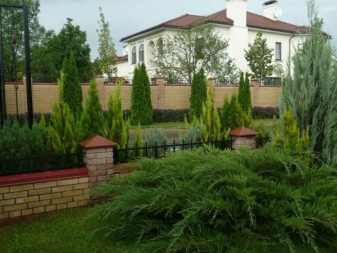
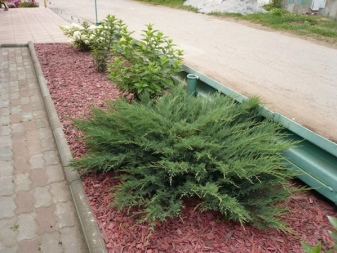
See below for more details.



































































The comment was sent successfully.